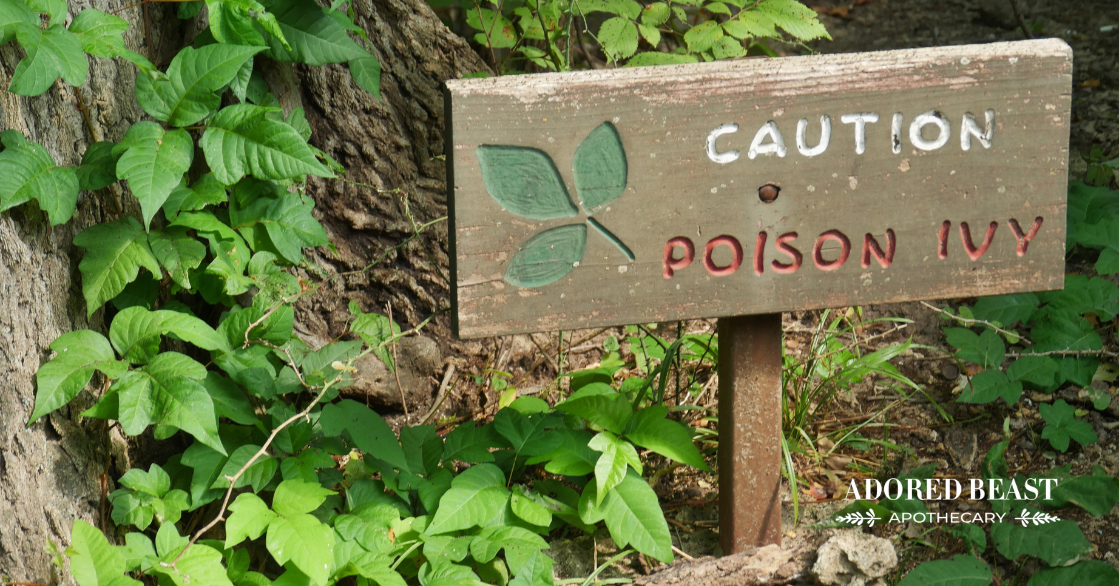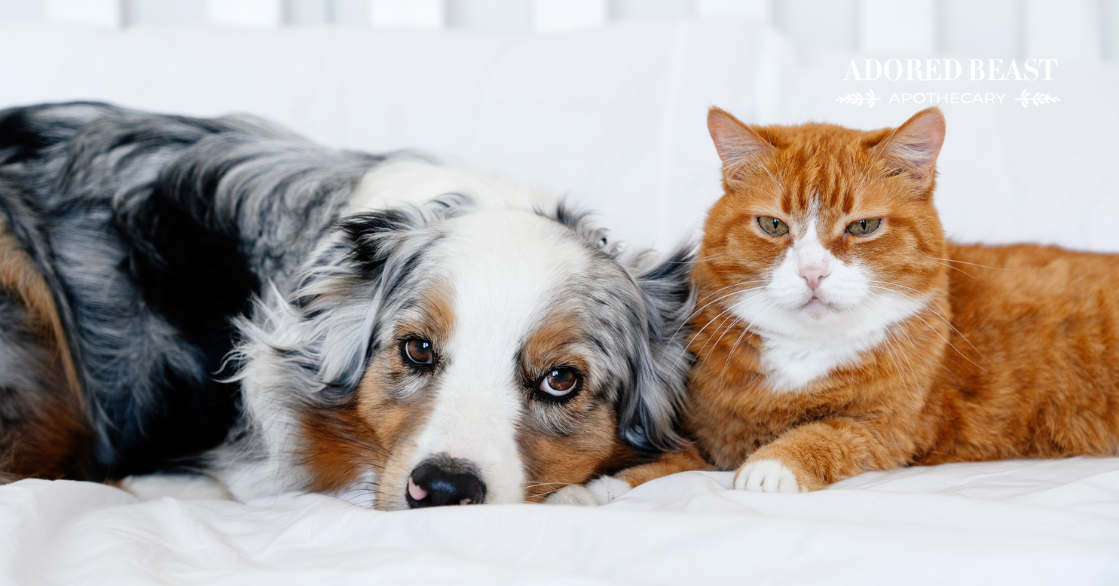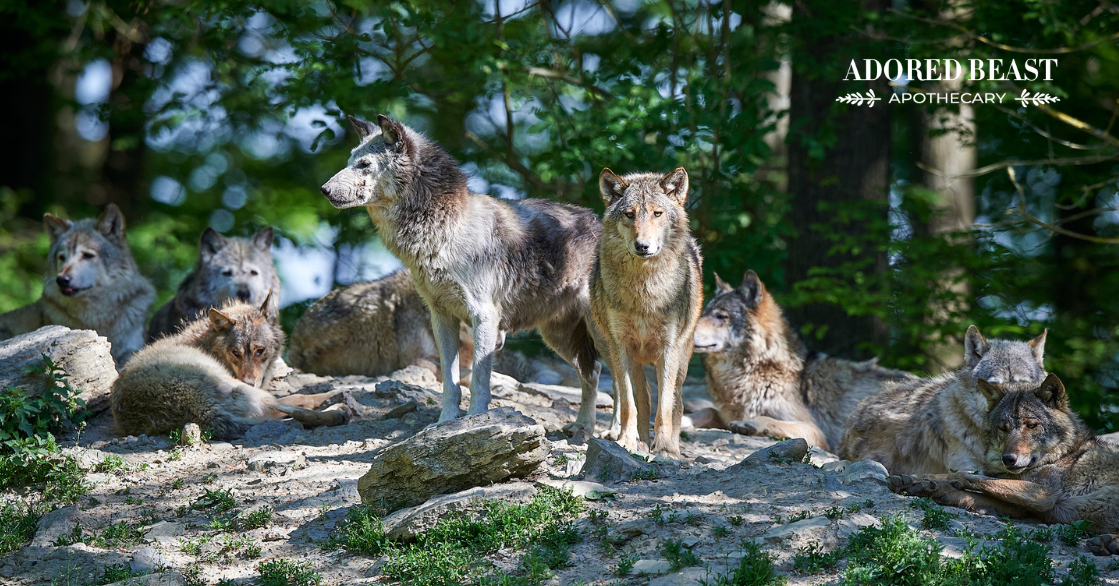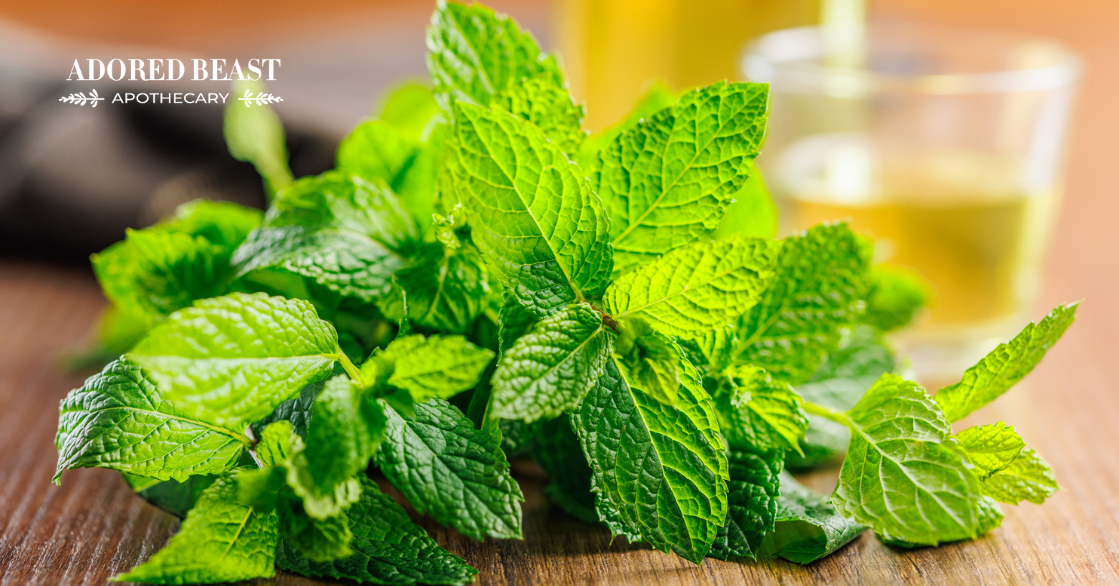When you head out for a hike or even just a walk through the park with your dog, nature offers endless sights, smells, and adventures. But along with all that fresh air and fun, there are also hidden hazards. This makes many dog parents wonder: Can dogs get poison ivy, and if so, what should you do next?
Knowing the signs of poison ivy exposure and how to treat it naturally can help you keep your dog comfortable and prevent the rash from getting worse. In this guide, we’ll cover whether dogs can really get poison ivy, the symptoms to watch for, and soothing remedies you can use at home to help your pup recover.
Can Dogs Get Poison Ivy?
If you’ve ever had poison ivy, you know how uncomfortable it is, and how careful you have to be to stop its spread. Poison ivy contains an oily resin called urushiol – that’s what causes the itching.
Can dogs get poison ivy? Yes, the same compound that causes rashes and itching in humans can cause our dogs to itch. Thankfully, dogs tend to be less likely to experience severe reactions than people because their fur provides a protective barrier. However, their exposed skin (like their belly, nose, and ears) can still be affected, and in some cases, they can even spread the irritating oils to you. To make matters more concerning, curious pups may try to nibble on the plant, which can lead to digestive upset or more serious issues.
While some dogs may not react at all, others can develop skin irritation, and in rare cases, ingesting the plant can cause more serious issues.
If you suspect your dog has come into contact with poison ivy, keep an eye out for these signs:
- Red, inflamed skin – especially on exposed areas like the stomach or inside of the ears
- Itching and scratching – your dog may be extra restless or constantly licking/chewing
- Small bumps or blisters – raised, fluid-filled spots can appear on sensitive skin
- Hair loss in affected areas – from excessive scratching or licking
- Swelling of the face or muzzle – especially if your dog rubbed against the plant
- Digestive upset (if ingested) – vomiting, diarrhea, or drooling may occur if your pup eats poison ivy
⚠️ When to see a vet: If your dog has severe swelling, widespread rash, difficulty breathing, or persistent vomiting after exposure, contact your veterinarian immediately.
What to Do Next
If you think your dog has been exposed to poison ivy, here are the steps to take right away:
- Wash your dog’s fur carefully – This is the best first step to avoid any further spread. Use lukewarm water and use a pet-safe shampoo to remove the urushiol oil. Wear gloves to avoid transferring the resin to yourself. Pay close attention to those areas with less fur: the belly, paws, etc.
- Give them Your Go 2 – This is our first response homeopathic combination that will help with trauma at the initial onset. The aconite and arnica are great for addressing inflammation.
- Clean everything – The oil can linger on fabric and spread to both you and your pup later. So, take care to wash collars, leashes, bedding, cushions – really anything they may have come in contact with before you bathed them. This is good for both you and your pup.
- Prevent licking – If your dog is licking irritated skin, consider a cone or soft recovery collar to avoid further irritation. You can also try a dog onesie if that is more comfortable for them, or even one of your t-shirts modified to fit them!
Natural Ways to Help Soothe Poison Ivy in Dogs
If your dog has a mild reaction, natural remedies can help calm the skin and reduce itching:
- Cold compresses – the cool water will help soothe the irritation.
- Apple cider vinegar – mix a 50/50 solution of ACV and spray it on, but NOT on raw or broken skin. This is especially good for soaking the paws!
- Oatmeal baths – Colloidal oatmeal (finely ground oats) added to lukewarm bathwater can ease itching and redness.
- Aloe vera gel (pet-safe, plain) – Aloe vera provides cooling relief when applied to small irritated patches. Avoid aloe with additives like alcohol.
- Chamomile tea rinse – Brew chamomile tea, let it cool, and apply it as a gentle rinse or compress to calm inflamed skin.
- Coconut oil – A thin layer of coconut oil can moisturize and soothe irritation, though some dogs may try to lick it off.
- Calendula cream or spray – Known for its skin-healing properties, calendula can help reduce redness and discomfort.
- Skin HEALth Spray – This is our soothing topical spray for dogs and cats, perfect for healing and soothing itching from poison ivy (and insect bites, hot spots, burns, wounds, skin abrasions, and more). It features calendula
Preventing Future Exposure
To reduce the risk of poison ivy contact:
- Learn how to identify and avoid poison ivy while walking your dog (“Leaves of three, let it be”).
- In areas where you know (or suspect) poison ivy is present, keep your dog on trails instead of letting them wander into brush or tall grass.
- Rinse your dog off after hikes, especially in areas where poison ivy is common.
Can dogs get poison ivy? Yes, although not as easily as humans. While most cases are mild and manageable at home, knowing the symptoms and having natural remedies on hand can make a big difference in your dog’s comfort. If your dog has a severe reaction, don’t hesitate to seek veterinary care. With a little awareness and quick action, you and your pup can enjoy the outdoors without the itch.












